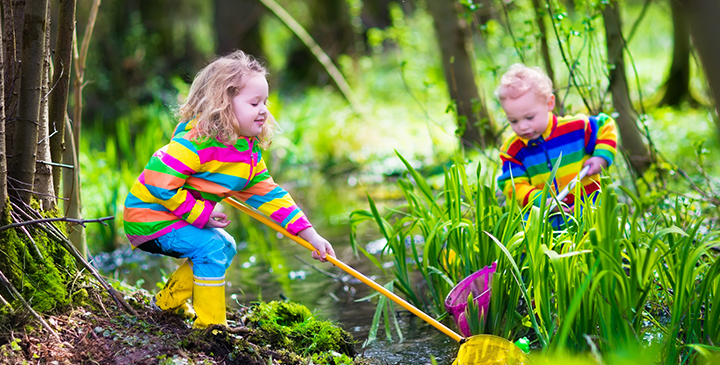Active play is the true work of a child. Play allows children and youth of all ages to try new things, test their boundaries, learn from their mistakes and simply enjoy being active. And while active play if fun, it’s also important for development. It’s during creative active play that independent learning takes place.
However, daily schedules are often filled with so many activities, with school work, music lessons, basketball practice, and other activities, the importance of active play may not seem obvious.
Children need active play every day. Active play is considered to be any unstructured, spontaneous, or self-directed physical activity. In a nutshell, it’s anything that keeps your child moving. This unstructured play allows children to use their boundless imaginations to invent fantastic games with creative and ever-evolving rules.
Current research has reemphasized the important role of unstructured active play in the physical and mental development of a child. The recommendation from child development experts is that this kind of unstructured physical play should be happening every single day.
Toddlers and preschoolers, ages 1 to 4 years, should accumulate at least 180 minutes of active play at any intensity. Children from ages 5 to 11 should have a full hour of moderate to vigorous activity. Activities can be spread throughout the day, rather than happening all at once. The aim is to find activities that cause them to breathe a little harder and their heart rate to beat faster.
Children usually don’t need much help coming up with creative ideas that will get them moving, but here are a few tips to help get you started.
Early Years
Look to provide access to safe, open areas, either indoors or outdoors, where kids can move freely. Add balls and toys that encourage more vigorous play at home and outside. Traditional games like hide-and-seek, hopscotch, hot potato, or scavenger hunts are great ideas. And, make an effort to get down on the floor and play with them!
School-age Children
Access to playgrounds, nature, skipping ropes, balls and equipment will encourage active play. For safety concerns, parents and caregivers can take turns supervising kids at play in the park or on the block, encourage kids to play outside with a friend, and consider advocating for traffic-calming measures in your neighbourhood.
Make Story Time Active Time
During the next story time, why not act out the story? Have everyone take turns to mimic the actions of the characters in the books (this works very well with animal books).
Daily Routines
Start a “fun walk” around the neighbourhood after dinner – walk slowly, quickly, with heavy steps, on tiptoes, zigzag, little steps, big steps or add hops, skips and running. Look for different play spaces, like fields or nature areas, to help keep your child engaged in active play.
Put Play Back In Your Schedule
Give your child the opportunity, either after school or on weekends to decide what they want to do. Dance, go for a swim, set up an obstacle course that everyone can use (including adults), or learn a new activity together (do you remember hula-hooping? It’s a great workout and the laughter is endless!).
Set Limits On Screen Time
Video games, computers, tablets and smartphones make it easy to avoid active play. Set limits to the amount of time your child spends in front of the screen or have children earn their screen time. For example, give your child 20 minutes of screen time for every hour they’re active.
While it is important for a child’s development to engage in active play with their friends, it is also important to remember that children learn best from positive role models. If parents will make time for active play with their children, whole families can become healthier and stronger.
Being physically active is important for a healthy, happy life. It doesn’t have to involve special equipment or registration fees. The best way to encourage that physical activity is to make it fun, and make it a natural part of your family’s daily life.



